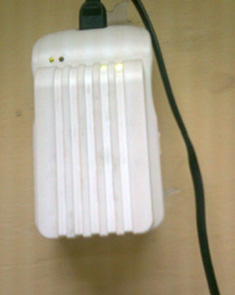Data or broadband services commonly refer to high-speed Internet access that is always on and faster than the traditional dial-up access.

Wi-Fi using Power Line Communication

Voice over IP
VoIP (voice over IP) is another type of service which is an IP telephony term for a set of facilities used to manage the delivery of voice information over the same electrical lines. VoIP involves sending voice information in digital form in discrete packets rather than by using the traditional circuit-committed protocols of the public switched telephone network (PSTN). A major advantage of VoIP and Internet telephony is that it avoids the tolls charged by ordinary telephone service.
Video over Internet protocol refers to the live streaming of video between two people over the Internet. Some people refer to it as videoconferencing or video "telepresence." Many companies are expanding their Internet telephony services to let users turn their home computers into video conferencing portals.


It uses existing power wiring to send signals that control lights and electrical loads from any location inside or outside your home. Since it needs ZERO new wires, it is an inexpensive and reliable solution for power line home automation!
It is process of automatically collecting consumption, diagnostic, and status data from energy metering devices and transferring that data over existing power lines to a central database for billing, troubleshooting, and analyzing. This advance mainly saves utility providers the expense of periodic trips to each physical location to read a meter. Another advantage is that billing can be based on near real time consumption rather than on estimates based on previous or predicted consumption. This timely information coupled with analysis, can help both utility providers and customers better control the use and production of electric energy consumption.

Automatic Meter Reading using Power Line Communication